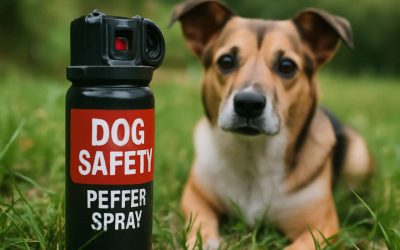Historical Origins of Self-Defense Techniques
Early Methods of Personal Safety – A review of traditional self-defense tools and techniques used before the invention of modern pepper spray
Throughout history, humans have sought effective ways to defend themselves amid unpredictable threats. Before the advent of modern self-defense tools, societies relied heavily on traditional methods that often depended on raw resourcefulness and primitive ingenuity. From sharpened sticks and stones to rudimentary weapons, early forms of personal safety were rooted in immediate, tangible solutions that provided a sense of control in volatile situations.
Ancient cultures, notably in Africa and Asia, employed a variety of techniques and implements designed to incapacitate or deter aggressors. These ranged from herbal concoctions with irritant properties to simple projectiles. Interestingly, the evolution of these methods reflects a persistent quest: understanding how to effectively protect oneself without escalating violence. This curiosity and necessity eventually led to innovations such as the use of natural irritants, which laid the groundwork for modern self-defense tools. The question of why was pepper spray invented emerges from this context — as a non-lethal, accessible means to empower individuals against threats without risking lethal escalation.
Use of Chemical Agents in Defense – Historical use of chemical irritants for personal protection and crowd control
Throughout history, the use of chemical agents for personal protection and crowd control has played a pivotal role in maintaining safety amidst chaos. Ancient civilizations, from the Egyptians to the Chinese, experimented with irritant substances derived from natural sources to incapacitate aggressors or disperse mobs. These early efforts reveal a fascinating pattern: humans have long sought non-lethal ways to defend themselves without escalating violence.
In fact, the application of chemical irritants in defense is not a modern invention. For centuries, various cultures employed herbal and mineral concoctions to cause temporary blindness, discomfort, or disorientation. In some cases, these substances were used by soldiers and law enforcement alike, serving as a crucial tool for maintaining order. The question of why was pepper spray invented ties directly into this historical context—an innovative response to the need for accessible, effective, yet humane self-defense methods.
By the 20th century, this ancient knowledge evolved into more sophisticated formulations. Today, pepper spray is recognized worldwide as a primary self-defense tool, especially in regions like South Africa, where personal safety is a constant concern. Understanding these origins underscores the enduring human desire for control and safety, even in the most unpredictable situations.
Development of Pepper Spray Technology
Inspiration from Natural Insect Repellents – How capsaicin, derived from chili peppers, became the basis for modern pepper spray
The development of pepper spray technology is rooted in a fascinating intersection of natural science and human ingenuity. Inspiration came from nature’s own insect repellents—specifically, capsaicin, the fiery compound found in chili peppers. This naturally occurring substance proved to be a potent irritant, capable of causing intense burning sensations and temporary blindness when applied to the eyes. It’s no coincidence that this fiery extract became the foundation for modern pepper spray, a non-lethal yet effective self-defense tool.
Capsaicin’s ability to cause discomfort in predators and pests led scientists to explore its potential for personal protection. By harnessing this natural irritant, they created a chemical agent that is both affordable and reliable. This innovation answered a pressing question—why was pepper spray invented—to provide individuals with a means of self-defense that is safe, accessible, and quick to deploy in threatening situations.
Early Formulations and Trials – Initial experiments and refinements in deploying chemical irritants for personal safety
The journey from basic chemical irritants to the sophisticated pepper spray used today was anything but straightforward. Early formulations involved trial and error, as scientists sought the most effective way to harness capsaicin’s fiery potential. Initial experiments tested various delivery methods—sprays, aerosols, and even powders—aimed at maximizing impact while minimizing risk to the user. These early trials often faced challenges, such as ensuring rapid dispersal and preventing degradation of the active compounds. The process of refinement was meticulous; each iteration aimed to strike a delicate balance between potency and safety.
Progress was driven by a desire to develop a reliable self-defense mechanism that could be easily deployed in threatening situations. This quest for effectiveness and safety led to innovations like pressurized canisters and targeted dispersal techniques. The evolution of pepper spray technology reflects a persistent pursuit: how to create a non-lethal, accessible means of protection that could be trusted in moments of crisis. It’s a testament to human ingenuity—transforming nature’s irritant into a tool that answers the fundamental question of why was pepper spray invented.
Reasons Behind the Invention of Pepper Spray
Need for Non-Lethal Self-Defense Tools – Addressing the demand for effective yet non-lethal personal protection methods
In a world where personal safety often feels like a fragile thread, the question lingers—why was pepper spray invented? It emerged from a pressing need for effective yet non-lethal self-defense tools, offering a beacon of hope for those seeking protection without the darkness of deadly force. As urban landscapes grow busier and threats more unpredictable, the demand for self-defense mechanisms that incapacitate rather than kill has skyrocketed. Pepper spray stands as a testament to human ingenuity—a chemical irritant derived from nature’s fiery bounty, designed to temporarily disable an attacker with a burst of fiery capsaicin.
This innovation was driven by a desire to empower individuals, especially women and vulnerable populations, with a means to defend themselves swiftly and safely. Unlike traditional weapons, pepper spray provides a non-lethal solution that respects the sanctity of life while ensuring personal safety is within reach. Its invention marked a pivotal evolution in personal security, blending science with necessity, and transforming the landscape of self-defense forever.
Challenges of Traditional Self-Defense – Limitations and risks associated with physical self-defense or lethal weapons
Traditional self-defense methods often fall short when faced with real danger. Physical attacks can be unpredictable, and lethal weapons carry irreversible consequences. In many cases, using force can escalate the situation or result in unintended harm. This is where the true necessity for non-lethal self-defense tools becomes clear. People needed something powerful enough to incapacitate an attacker, yet safe enough to avoid permanent damage.
The answer lay in a simple yet revolutionary idea: chemical irritants derived from nature. The inspiration for modern pepper spray comes from capsaicin—the fiery compound found in chili peppers. This natural substance offers a potent, immediate response to threat without the risks associated with lethal weapons. Its development was driven by the urgent need for a self-defense mechanism that respects human life while providing effective protection.
But why was pepper spray invented? The answer is rooted in the challenges posed by traditional self-defense techniques. Many physical methods require skill, strength, or proximity, increasing the risk of injury to the defender. Moreover, the danger of lethal weapons like firearms or knives makes them unsuitable for everyone. Consequently, the creation of pepper spray addressed this gap, offering a non-lethal, accessible, and instantly deployable solution for personal safety. Its invention transformed the landscape of self-defense, giving vulnerable populations a fighting chance in a dangerous world.
Legal and Safety Considerations – How regulations and safety concerns spurred the development of pepper spray
The invention of pepper spray was driven by a complex web of legal, safety, and societal concerns. Governments around the world grappled with how to provide effective self-defense options that wouldn’t result in irreversible harm or legal complications. The challenge was to create a tool that offered immediate protection without the risk of lethal consequences—especially in densely populated areas like South Africa, where personal safety is a daily concern.
Regulations also played a significant role. Many countries imposed restrictions on the possession and use of lethal weapons such as firearms and knives, pushing inventors to seek alternatives. As a result, the development of pepper spray was influenced by safety considerations, aiming to minimize accidental injuries or misuse. Its non-lethal nature made it a legal and practical choice for civilians, law enforcement, and security personnel alike.
In fact, the evolution of pepper spray often involved navigating a maze of safety standards and legal frameworks.
- Ensuring the irritant’s potency was effective but not permanently damaging
- Preventing misuse or accidental discharge
- Meeting regulatory approval for civilian use
These factors all contributed to why was pepper spray invented, transforming it into a trusted, accessible self-defense tool for millions worldwide. It’s no wonder that in a world filled with unpredictable threats, a simple spray of capsaicin became the go-to solution for personal safety—offering peace of mind without crossing the line into lethal force.
Impact and Evolution of Pepper Spray
Adoption by Law Enforcement and Civilian Use – The proliferation of pepper spray in various security contexts
The impact of pepper spray’s proliferation in both law enforcement corridors and civilian streets is nothing short of revolutionary. Once a clandestine tool wielded by security forces, it has now become a symbol of empowerment for the individual seeking protection in a world teetering on chaos. Its adoption by police agencies worldwide speaks volumes—offering a non-lethal alternative that balances deterrence with safety, all while avoiding the grim finality of deadly force.
As civil unrest and personal safety concerns escalate, the evolution of pepper spray reveals a relentless pursuit of humane self-defense. Its widespread use in South Africa, where safety often hangs by a fragile thread, underscores its significance. The transition from specialized law enforcement equipment to a common civilian safeguard marks a turning point in personal security. Today, pepper spray stands as a testament to mankind’s desire for control—a chemical sentinel that strikes fear into the heart of threat without crossing the line into lethal territory.
Advancements in Formulation and Delivery Systems – Innovations that improved effectiveness and ease of use
The evolution of pepper spray showcases a remarkable journey from rudimentary deterrents to sophisticated self-defense tools. Innovations in formulation and delivery systems have significantly enhanced its effectiveness and ease of use, making it a vital part of personal safety in today’s world. Modern formulations leverage concentrated capsaicin extracts, derived from chili peppers, to maximize irritant potency. These refined chemical compounds ensure a swift and incapacitating response from an attacker, providing users with precious seconds to escape danger.
Delivery systems have also seen revolutionary advancements. From simple aerosol cans to compact, ergonomic units, these innovations prioritize user control and precision. An ordered list of typical improvements includes:
- Enhanced spray patterns for wider coverage
- Improved propellants for longer shelf life and consistent discharge
- ergonomic designs for better grip and rapid deployment
Such technological progress underscores the ongoing effort to produce non-lethal self-defense solutions that are both effective and accessible. This evolution raises an intriguing question — why was pepper spray invented? The answer lies in humanity’s persistent quest for a humane alternative to lethal weapons, offering a chemical sentinel that balances deterrence with safety, especially in regions like South Africa where personal security remains a pressing concern. As the chemical irritant’s formulation and delivery systems continue to advance, so too does its role as a modern guardian, empowering individuals to stand against threats without crossing the line into lethal force.



0 Comments